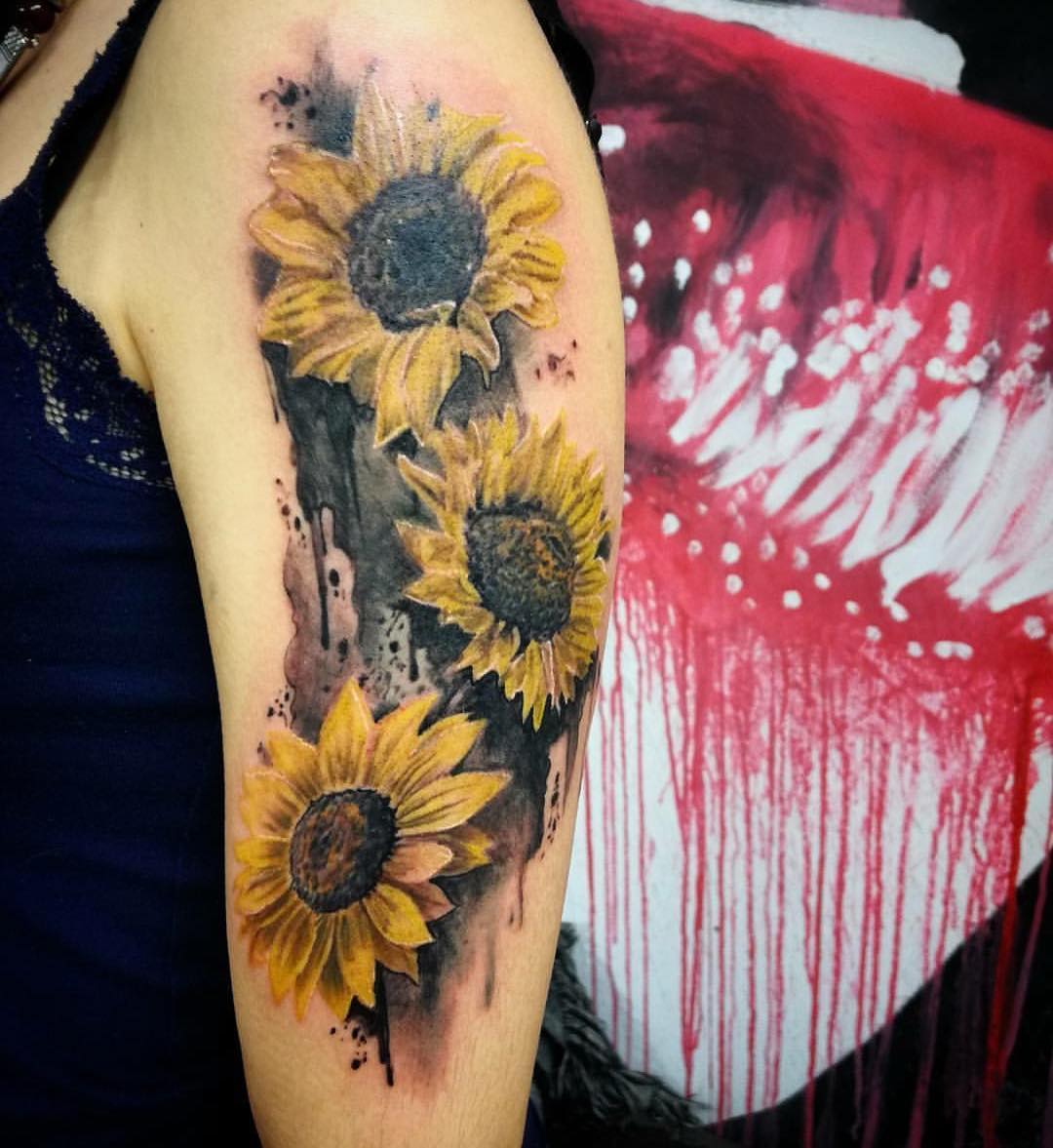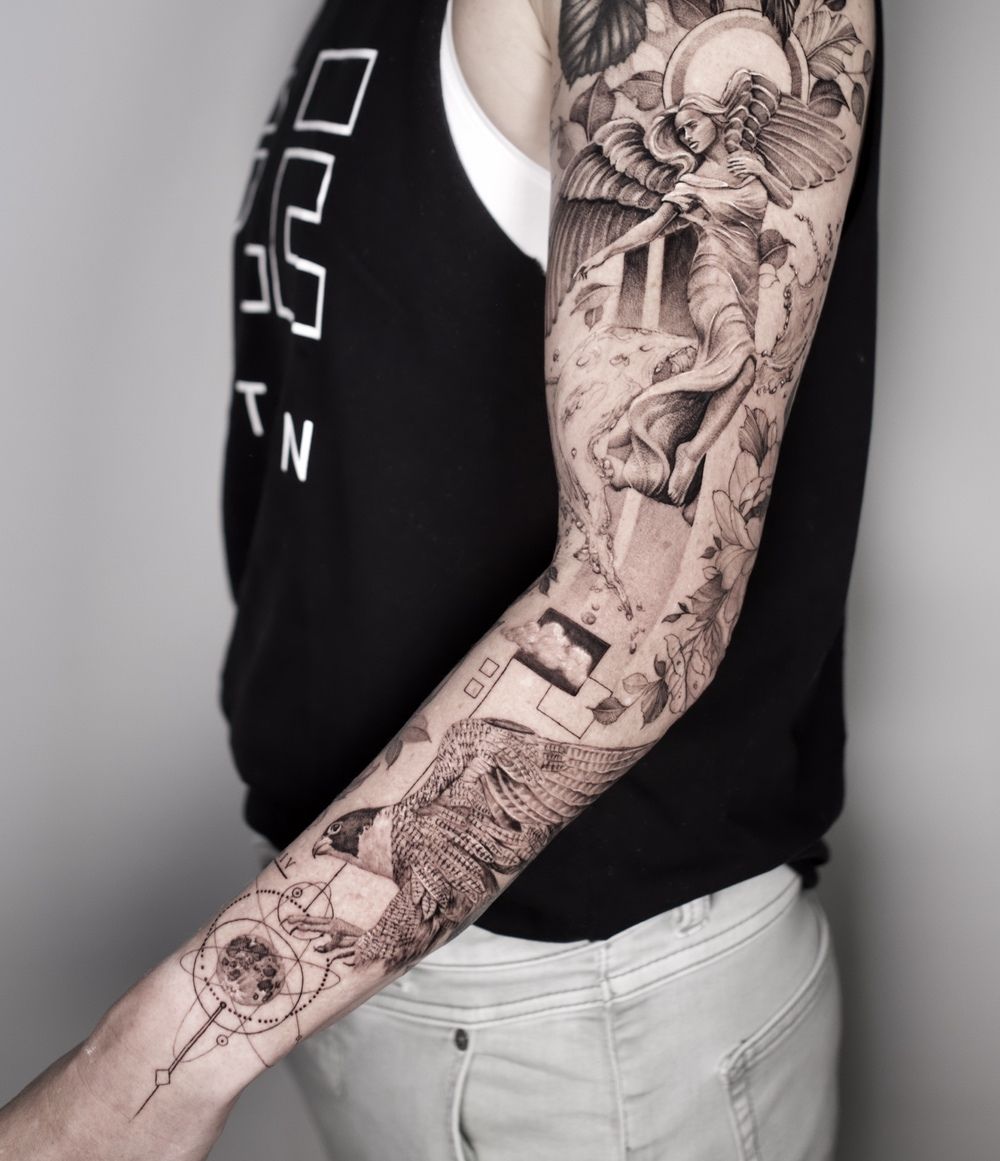
Okay, so you’re thinking about ink, huh?
Specifically, can I get a sunflower tattoo that looks like a painting?
It’s a killer idea, I get it.
Sunflowers are rad.
But let’s be real, you’re probably wondering:
- Is it even possible?
- Will it look like a muddy mess?
- How do I find an artist who can actually pull this off?
I’ve been there.
Let’s break it down.
Sunflower Painting Tattoos: Making the Dream a Reality
Yes, you absolutely can get a sunflower tattoo that looks like a painting.
The key is finding the right artist.
Think of it like this: not every painter can pull off a Monet.
Same goes for tattoo artists.
You need someone with serious skills.
Finding Your Tattoo Artist Masterpiece Maker
This is the most crucial step.
Don’t rush it.
Here’s my checklist:
- Portfolio Dive: Scour their Instagram, website, everything. Look for examples of realistic tattoos, watercolor tattoos, or anything with a painterly style. If they’ve done floral tattoos before, even better.
- Consultation is Key: Talk to them! Explain your vision. See if they "get" it. A good artist will offer suggestions and be honest about what’s achievable.
- Trust Your Gut: Do you vibe with them? Do they seem genuinely excited about your idea? If not, move on.
I once went to an artist who clearly wasn’t into my idea.
The consultation felt forced and the design was…meh.
I walked away.
No regrets.
Tattoo Styles that Mimic Painting
Certain tattoo styles lend themselves well to that painted look.
Consider these:
- Watercolor Tattoos: Obviously. These use diluted inks to create soft, blended effects, mimicking the look of watercolor paintings. Be warned, they can fade faster than traditional tattoos.
- Realism Tattoos: If you want hyper-realistic detail, this is the way to go. Think individual petals, intricate shading, and vibrant colors.
- Illustrative Tattoos: These often incorporate bold outlines and saturated colors, giving them a slightly more stylized, but still painterly, feel.
I’m a big fan of illustrative tattoos.
They’re bold and eye-catching.
Elements of a Painterly Sunflower Tattoo
What makes a sunflower tattoo look like a painting?
It’s all in the details:
- Color Palette: Discuss the colors with your artist. Do you want bright, vibrant hues, or something more muted and realistic?
- Shading and Highlights: This is where the magic happens. Proper shading and highlights create depth and dimension, making the sunflower look three-dimensional.
- Brushstroke Effect: Some artists can even mimic the look of brushstrokes, adding to the painterly feel.
- Background: Consider adding a subtle background to enhance the sunflower. Think abstract washes of color or a soft, blurred landscape.
Pain and Aftercare
Let’s keep it real: tattoos hurt.
The level of pain depends on your tolerance and the location of the tattoo.
Ribs? Ouch.
Outer arm? Not so bad.
Aftercare is crucial.
Follow your artist’s instructions to the letter.
This will ensure your tattoo heals properly and looks its best.
I use unscented lotion and antibacterial soap.
Works like a charm.
Can I Get A Sunflower Tattoo That Looks Like A Painting? FAQ
- Q: Will a watercolor sunflower tattoo fade quickly?
- A: Potentially, yes. Watercolor tattoos tend to fade faster than traditional tattoos because the ink is more diluted. Regular moisturizing and sun protection are key.
- Q: How much will a sunflower painting tattoo cost?
- A: It depends on the size, detail, and the artist’s hourly rate. Expect to pay more for a highly skilled artist.
- Q: How long will it take?
- A: Again, it depends on the size and complexity. A small, simple sunflower might take a few hours, while a larger, more detailed piece could take multiple sessions.
- Q: What if I don’t like it?
- A: Choose your artist wisely! Do your research, look at their portfolio, and have a thorough consultation. If you’re not happy with the design, speak up before they start tattooing. Removal is an option, but it’s expensive and painful.
So, there you have it.
Getting a sunflower tattoo that looks like a painting is totally achievable.
Just remember to do your homework, find the right artist, and trust the process.
Ultimately, can I get a sunflower tattoo that looks like a painting? Yes, with the right artist and planning, absolutely.










